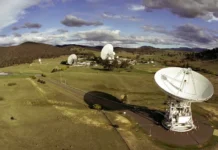In 2018, while the world was just beginning to grasp the vast potentials of artificial intelligence, China took a monumental leap in the application of AI technology by unveiling the world’s first AI news anchor. This groundbreaking development not only marked a significant milestone in the realm of digital media but also set the stage for a future where the lines between human and machine in content delivery are increasingly blurred.

The Advent of AI in News Broadcasting
Developed by China’s state-run news agency, Xinhua, in collaboration with Sogou, a Chinese search engine company, the AI news anchor was introduced at the World Internet Conference in Wuzhen. This virtual avatar was modeled after a real news presenter, Zhang Zhao, embodying his voice, facial expressions, and gestures. The technology behind this involves natural language processing, a branch of AI that allows the machine to understand and generate human language in a way that is both seamless and interactive.
How the AI News Anchor Works
The AI news anchor is powered by deep learning algorithms and text-to-speech technology. It analyzes vast amounts of data, learning from video footage of actual broadcasts to mimic the nuances of human speech and facial movements. This allows the AI anchor to deliver news with a realistic presence, which is critical in maintaining viewers’ trust and engagement. Unlike human anchors, the AI anchor can work tirelessly, updating viewers with the latest news without requiring breaks, sleep, or holidays.
Benefits of AI Anchors
- Efficiency and Cost-Effectiveness: AI anchors can operate continuously, reducing the need for a large team of news anchors and thereby cutting down operational costs.
- Scalability: They can deliver news in multiple languages and dialects, increasing the reach of news channels without the need to hire multilingual staff.
- Timeliness: AI anchors can quickly generate breaking news reports, ensuring that the audience receives information without delay, a crucial factor in emergency situations.
Challenges and Controversies
Despite its advantages, the use of AI news anchors is not without challenges. One major concern is the potential loss of jobs for human journalists and anchors as AI technologies take over their roles. Additionally, there are ethical concerns regarding the misuse of such technology for creating misleading or deepfake content, which could be difficult to distinguish from real, factual reports.
Impact on the News Industry
The introduction of AI anchors has sparked debates about the future of journalism. While some view it as a progressive step towards integrating technology into media, others worry it may undermine journalistic quality and reduce human empathy that professional journalists bring to their reports. Moreover, it raises questions about authenticity and reliability, as AI-generated content could potentially be manipulated to spread misinformation.
Global Reception and Future Prospects
Globally, the reception to AI news anchors has been mixed. While some countries and companies are exploring similar technologies, others are cautious, prioritizing the ethical implications and long-term effects on journalism. Looking forward, the technology is expected to advance, with improvements in AI’s emotional intelligence capabilities, which could address some of the current limitations and concerns.
Conclusion
China’s introduction of an AI news anchor in 2018 significantly pushed the boundaries of traditional broadcasting, offering a glimpse into the future of how news could be delivered. As we advance, it will be essential for the media industry, tech developers, and regulators to work together to harness the benefits of AI while addressing ethical and practical challenges. The evolution of AI in broadcasting continues to unfold, promising to redefine our consumption of news in unprecedented ways.
This analysis of China’s first AI news anchor demonstrates not only the remarkable progress in AI technology but also the complexities and responsibilities that come with digital innovation. As AI continues to develop, it will inevitably lead to further debates and discussions on the best ways to integrate these technologies into our daily lives, ensuring they enhance society rather than detract from it.


































